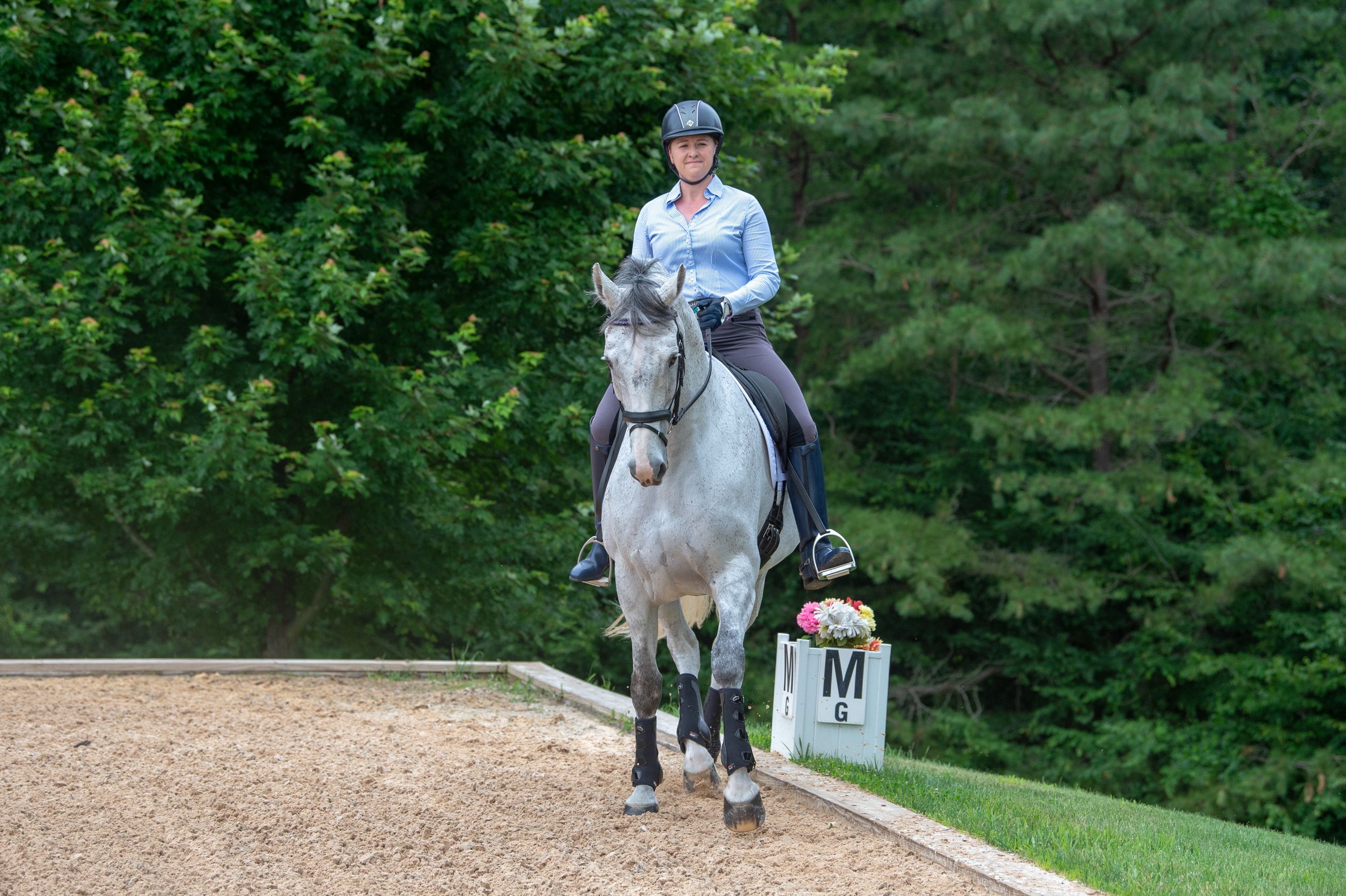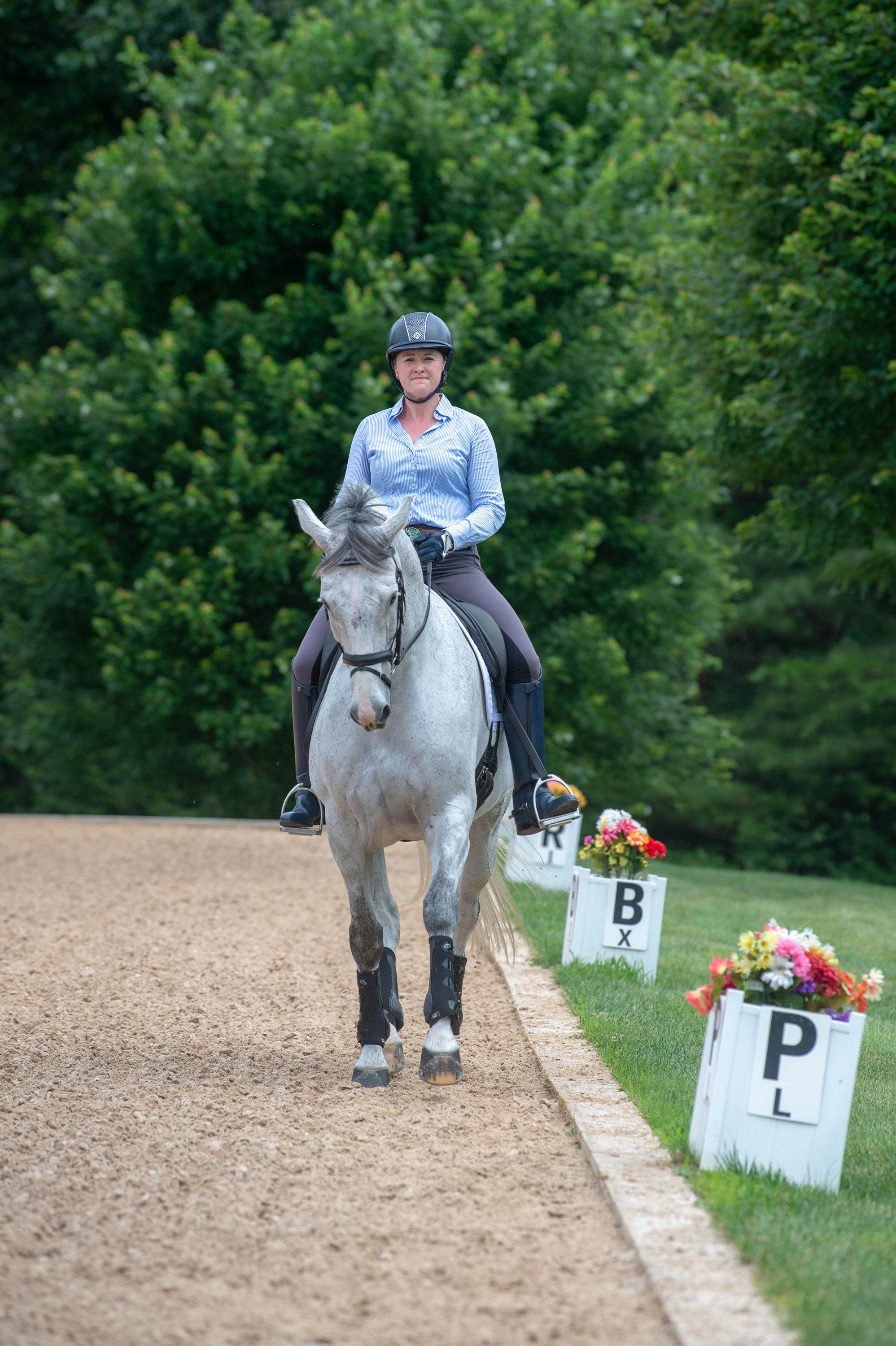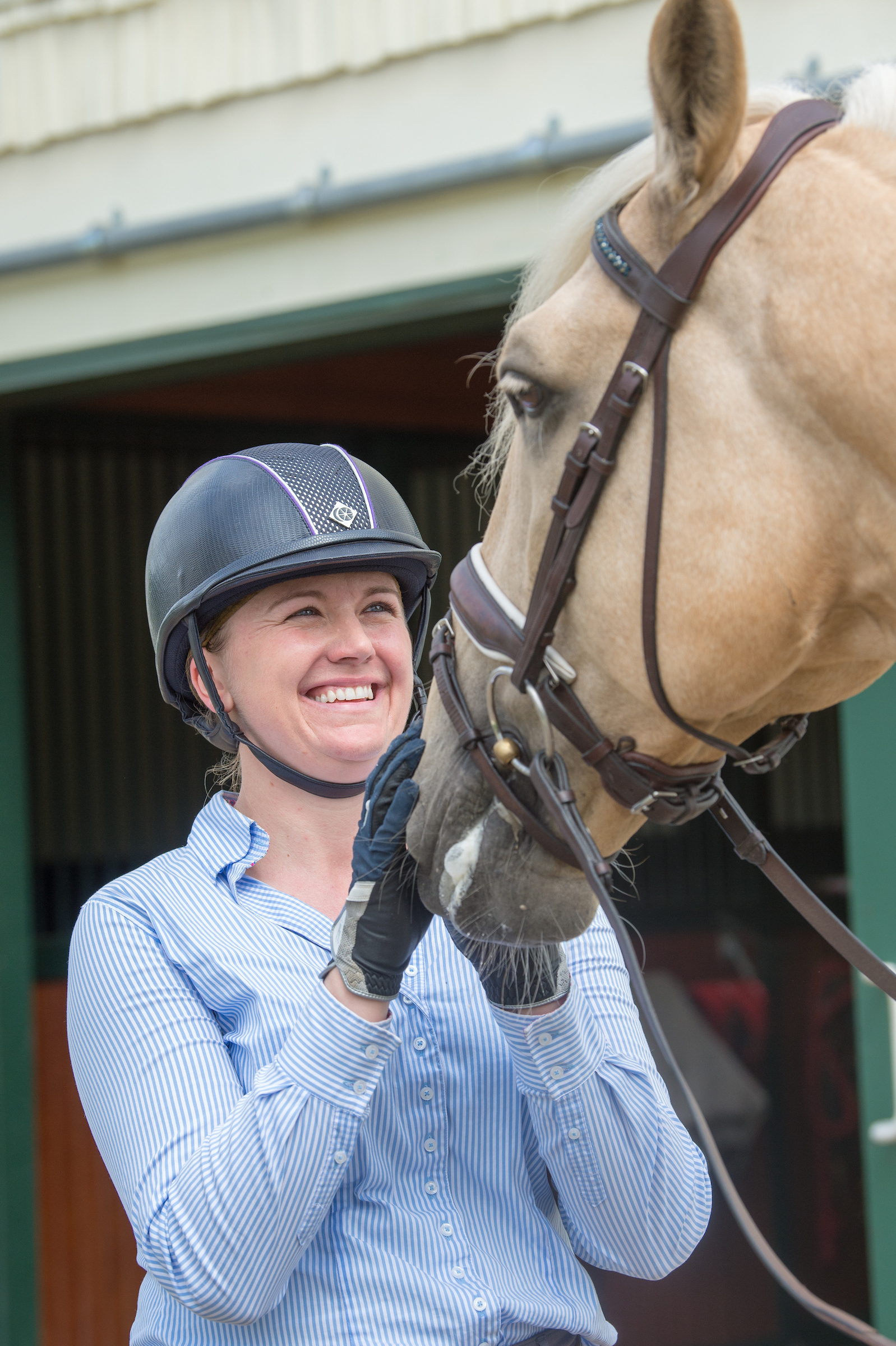
Shoulder-in is one of the best lateral movements for testing and improving your horse’s fine-motor controls of steering, collection and engagement. In a correctly ridden shoulder-in, the horse’s hind legs stay on the track, parallel to the rail. His front legs come to the inside of the hind legs, so that the outside front leg tracks directly in front of the inside hind leg, and his body makes a 30-degree angle with the rail. This way, instead of traveling on two tracks with the inside hind leg directly behind the inside foreleg and the outside hind leg behind the outside foreleg, the horse travels on three tracks: the inside foreleg and outside hind leg on their own individual tracks and the outside foreleg and inside hind leg sharing the same track.
The shoulder-in is not physically easy to perform. It requires significant bending through the horse’s body, beginning with the compression of the abdominal muscles, continuing through the neck and culminating in a slight inside flexion of the poll. This is important to bear in mind when teaching this work to your horse. Asking for too much too soon can lead to incorrect execution, frustration and even injuries.
Shoulder-in is most commonly done in the trot, which is typically ridden sitting. While it can be developed out of posting trot, sitting gives the rider more tools to manage the horse’s alignment and posture. If you’re new to sitting trot, make sure that you take whatever time necessary to develop a strong core and independent seat before attempting more advanced collected movements like shoulder-in.
In the show ring, the shoulder-in should begin as the horse’s nose touches the letter where the test indicates the movement should start, and finish as his nose touches the last letter. The trot should at least maintain the original tempo and energy, if not build slightly from beginning to end. The angle and bend, however, should stay consistent throughout the movement.
Don’t forget to finish the movement! I see so many riders fail to straighten the horse after the shoulder-in and, as such, their horses end up either fishtailing out through the corner like a Honda on ice or falling on the forehand. If you’re riding a test where the shoulder-in is followed immediately by a volte (small circle), the last step of shoulder-in should be the first step of your turn around the circle. Otherwise, end each shoulder-in by traveling straight for at least a step or two. This tests your control of your horse’s body and shows said control off to the judge. Anybody can let a horse fall apart through a corner, but it takes tact and mastery to finish the shoulder-in and then immediately ride a proper corner.
Before performing this lateral movement, your horse needs to be energetic, well connected from hind legs to bridle and straight. A lackluster trot with insufficient energy means he will be very taxed to lift his back and engage his hind legs appropriately. Momentum is your friend, and your horse will struggle less with the connection required if he’s got some spring in his trot.
Because this movement can be physically challenging for the horse just beginning to learn collection, keep your expectations reasonable. Develop a few steps of shoulder-in and then straighten, fitting in several “chunks” of the movement per long side, to help your horse build strength and confidence. And remember that there is no test that requires more than the distance between three letters—24 meters—of shoulder-in, so practicing an entire long side is overkill.
The Value of Shoulder-In
In dressage tests, the shoulder-in first appears at Second Level and doesn’t disappear until the piaffe and passage are introduced. It’s an incredibly important movement to ride well from a competition perspective, but mastering shoulder-in also opens the door to mastery of much more difficult collected work. To control the shoulders is to control the horse. When a horse is steered by moving his shoulders onto the desired line, he turns in a balanced and organized way. When he is steered only by the inside rein, it tends to make his body fall out of the turn. While, of course, his engine is his hind legs, once that engine is firing, the control panel is his front legs.
Mastery of an individual horse’s shoulders is helped by nature: A more uphill horse will find it easier to maintain an uphill balance than a downhill horse will because his weight is already naturally distributed more over his hind end than his forehand. But even on the most beautifully put-together and naturally athletic horse, your ability to control where his shoulders go is developed over time through the installation of the half-halt and strength building, for example, with gymnastic exercises such as the shoulder-in-to-renvers (haunches-out)-to-shoulder-in.
See photo gallery below to learn how to ride a correct shoulder-in.
Common Mistakes
When you practice shoulder-in at home, check yourself frequently in the mirror or ask a ground person to tell you if you’re slipping into any of the following bad habits (see photos below):
Too much neck bend. Many riders mistakenly think that shoulder-in is achieved by using the inside rein. While this does result in more bend of the neck, it doesn’t guarantee that the horse brings his shoulders to the inside—in fact, it usually achieves the opposite. Imagine a horse spooking at something. He’ll point his head and neck at the thing he’s afraid of and, as a result, the rest of his body will fall away from it. The same is true when a rider uses the inside hand instead of the inside leg to create bend; it often results in the horse’s shoulders falling out. I playfully call this movement a “neck-in” or “head-in” as opposed to a shoulder-in.
Haunches stepping out/leg-yielding. Keeping the horse’s hind legs traveling parallel to the track while the shoulders come in requires him to engage and lift his inside hind leg and his back a great deal. To avoid this extra physical effort, many clever horses will instead step to the outside with the outside hind leg. The end result is a three- (or four-) track movement where the horse’s body stays relatively straight, his hind legs cross and no engagement is achieved. It is, in fact, a leg-yield down the rail. Leg-yielding on the rail can be a wonderful tool to create looseness or to encourage control of tight or speedy horses. But it isn’t shoulder-in.
Too much angle. A shoulder-in should be on three tracks, not four. Asking for too much angle will force your horse’s legs to travel on four tracks, which makes it even easier for him to disengage his hind legs and push them out. Riding in front of a mirror or with the help of a ground person is a good way to ensure that you’re performing the shoulder-in correctly on three tracks.
Collapsing through the torso. I see many riders tip a shoulder down, usually the inside shoulder. You are not a little teapot—keep the line of your shoulders parallel to the earth.
The Almost-Shoulder-In

There’s a wonderful variation of the shoulder-in called shoulder-fore, in which the shoulders are just slightly to the inside of the haunches. This encourages increased engagement of the inside hind leg and an increase in uphill carriage compared to just going straight. For my horses, shoulder-fore is a lifestyle. Other than my first and last centerlines, and lines of tempi changes, my horses hardly ever go two-track straight, but rather are always in a bit of shoulder-fore, both at home and in the show ring.
The aids for shoulder-fore are the same as the aids for shoulder-in, just to a lesser degree.
About Lauren Sprieser

Originally from Oak Brook, Illinois, Lauren Sprieser made her first foray into international-level dressage at the age of 18, under the tutelage of Lendon Gray. She competed in three North American Junior & Young Rider Championships, winning two team medals, and three U.S. Equestrian Federation Young Adult “Brentina Cup” National Championships, and earned her U.S. Dressage Federation gold, silver and bronze medals—all before her 21st birthday.
Lauren worked for several trainers, including Olympic gold medalist and German team coach Monica Theodorescu and her late father, George, and Olympic bronze medalist Carol Lavell, before starting her own business, Sprieser Sporthorse, in Marshall, Virginia, in 2007. She now produces FEI horses and trains riders of all levels and disciplines, from green to Grand Prix, NAJYRC gold medalists to Kentucky Three-Day Event finishers. She and her most recent Grand Prix partner, Ellegria, earned top Grand Prix and Freestyle placings at the 2015 and 2016 USDF Finals and third place at the 2016 CDI**** World Cup Test Event in Omaha.
This article was originally published in the Summer 2019 issue of Practical Horseman.










